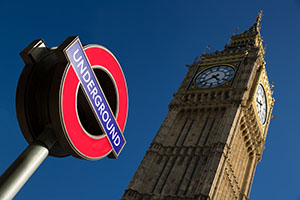In their final meeting of 2017, which will conclude on Wednesday November 1st, the FOMC (the chairs of all the regional Feds), will end their meeting by announcing their decision regarding the key current interest rate for the USA. The announcement is generally followed by a press conference and/or a document, outlining the reasons why the decision has been taken.
It’s often during the rapid analysis of the documentation, or during the press conference, when investors will gain extra insight into the FOMC’s motivation and forward guidance; is the overall message hawkish, or dovish? Are the Fed chairs acting in a hawkish manner; by looking to rein in a loose monetary policy which has existed over recent years through emergency/low base rates and quantitative easing? Or will they continue with a dovish policy; by keeping rates low and indicating that quantitative tightening will not occur, with any degree of urgency, in 2018?
Earlier in October an interest rate rise, from the current rate of 1.25% to 1.5%, looked odds on to be announced on Wednesday, in keeping with a commitment made earlier in the year by the FOMC; to raise rates three times in 2017. However, the current consensus from many of the economists polled via Bloomberg and Reuters, now appears to be mixed. Several are now suggesting that the key rate will remain at 1.25% until early 2018, despite a raft of recent USA hard data beating forecasts; GDP has risen despite the recent hurricane damage, inflation is benign at 2.2%, unemployment is close to multi decade lows, wages are rising, retail and durable sales are up and consumer confidence appears to be high. The data suggests that the economy is strong enough to cope with a series of rate rises, in order to potentially normalize rates to circa 3%, by the third quarter of 2018.
This normalization process, combined with the Fed beginning to divest itself of its $4.5 trillion balance sheet, by way of a process being termed “quantitative tightening”, was a policy outlined by Janet Yellen in 2017, who now appears odds on to be replaced by a Trump choice, as the Fed chair in February. This potential change may also influence the FOMC decision; perhaps the new appointment should not inherit previous policy.
As the announcement is released, during and shortly after any press conference is held, we can expect to witness movement in the USD, versus its major peers and moreover the majority of its peers. Naturally the movement will be more extreme dependent on the level of any rise and how hawkish, or dovish the overall narrative is. USD has made significant gains versus several of its main peers over recent weeks, therefore the market may have already priced in any rate increase and the impact (if indeed a rate rise is announced) may be limited. What is for sure is that a rate rise of circa 0.25% is not unexpected. However, traders should adjust their positions carefully and accordingly, as interest rate decisions are without doubt one of the key, high impact, calendar events during the year and the market reaction can be highly unpredictable.
KEY CURRENT ECONOMIC DATA FOR THE USA.
• Interest rate 1.25%.
• GDP growth 3%.
• GDP growth annual 2.3%.
• Unemployment rate 4.2%.
• Wage growth 3.2%.
• CPI (inflation) 2.2%.
• Government debt v GDP 106%.
• Composite PMI 55.7.
• Durable goods orders 2.2%.
• Retail sales 4.4%.

